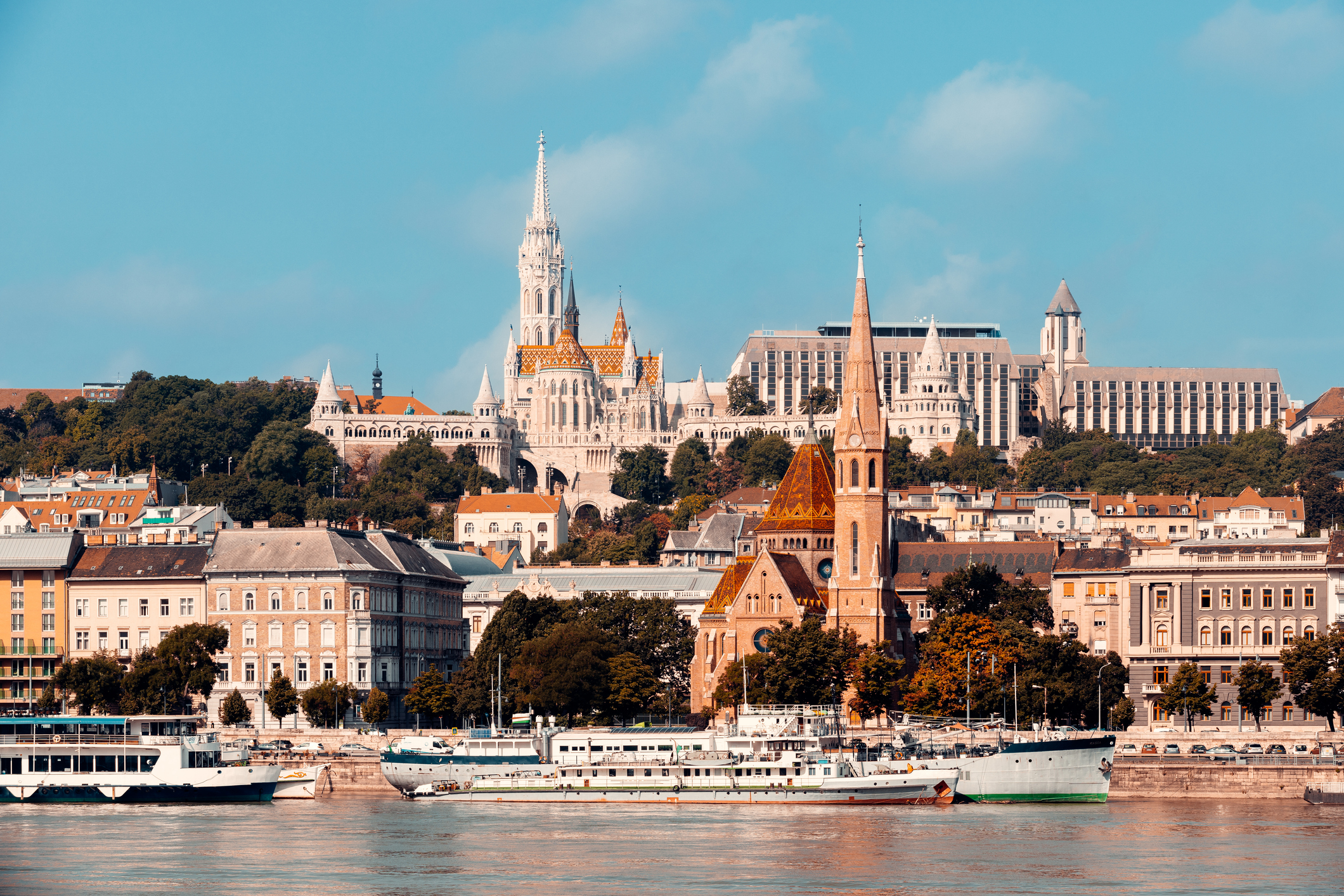Wellness Resorts Deliver Stress-Busting Vacations
A wellness resort can help you relax, get fitter, eat healthier—and have fun, too.


For nearly three decades, Nemacolin Woodlands Resort, in western Pennsylvania, has provided a scenic getaway for people who want to golf, ski, dine at its five-star restaurant, and indulge in a massage or facial at the resort’s well-appointed spa. Guests can also hike the 2,000-acre property, which in the early 1900s provided a fashionable hunting and fishing retreat for Pittsburgh’s industrial chieftains.
But in recent years, Nemacolin has launched an ambitious effort to appeal to people who want more from their vacations than a respite from the daily grind. In 2014, the resort turned a building previously used for conferences into a Holistic Healing Center, where guests can take advantage of acupuncture, meditation classes, stress-relief therapy and metabolism testing, among other things. Nemacolin’s 94-year-old founder, Joe Hardy, visits the center regularly for massages and acupuncture treatments.
Hardy’s daughter, Maggie Hardy Magerko, who took over the business from her father in 2002, decided to create a center dedicated to health and wellness after visiting Canyon Ranch in Tucson, Ariz. Founded in 1979, Canyon Ranch is one of the oldest and best-known “healthy vacation” destinations in the U.S. These days, though, it has a lot of competition. Revenue from wellness tourism grew by 14%, to $563 billion, between 2013 and 2015, according to the Global Wellness Institute, a research organization. Faced with rising health care costs, many baby boomers have adopted healthier habits, and they don’t want to abandon them when they go on vacation, says Anne Dimon, founder of Travel to Wellness, an online magazine that has covered wellness travel since 2004.

Sign up for Kiplinger’s Free E-Newsletters
Profit and prosper with the best of expert advice on investing, taxes, retirement, personal finance and more - straight to your e-mail.
Profit and prosper with the best of expert advice - straight to your e-mail.
A retreat for every style
If you’re intrigued by the idea of a wellness vacation, you have a huge number of choices, both in the U.S. and overseas. Wellness is a broad term, encompassing everything from meditation to pool Pilates, and wellness retreats can be pricey. We found resorts that will fit a variety of budgets, personalities and goals—which could include weight loss, stress reduction, digital detox or some combination.
Structured. These types of retreats appeal to people who want a break from the stress of making a lot of decisions, says Katlyn Hatcher, Nemacolin’s spa and wellness director. “It’s hard enough for people to find the time to devote to themselves,” she says. “It’s great when it’s already laid out.”
In 2015, Nemacolin began offering four-day fitness retreats four times a year; it also offers a three-day workshop on diet and nutrition, and a weekend retreat for yoga and meditation. You can take yoga and fitness classes throughout the week.
Nemacolin’s four-day Fitness Adventure Retreat typically starts at 7:30 A.M. with a 90-minute upper-body strength-training class. After a group breakfast, participants embark on a one-hour fitness scavenger hunt, followed by two hours of free/spa time. The day concludes with a two-and-a-half-hour nutrition workshop. The remaining three days are similarly structured, depending on the season. Activities include yoga, hiking, more strength training, and gymnastics. The program is offered in June, November, February and April. The price, which covers breakfast and all activities for the four days, ranges from about $1,400 to $1,730, depending on the accommodations.
Some structured programs are even more rigorous. A typical day at the Ranch Malibu, in Malibu, Calif., begins at 5:30 A.M. with Tibetan chimes. After a morning stretch, guests have breakfast, then embark on a four-hour hike. After lunch and a one-hour nap, participants take a low-impact strength-training class, followed by yoga. Dinner is at 7, and bedtime is at 8:30. The cost for one week, which covers all programs, meals, a room in a private guest cottage and a daily massage, is $7,200.
If you have more time and want to explore somewhere new, you can find a wellness retreat just about anywhere in the world. Bali and Sri Lanka are among the places that have experienced a lot of growth in wellness travel, says Dimon, of Travel to Wellness. Santani Luxury Wellness Resort, located on a former tea plantation about an hour from Kandy, Sri Lanka, offers a slate of yoga, meditation and fitness classes, along with a spa facility. The cost of a seven-night wellness package, which includes a room with a mountain view, all meals, spa treatments and group activities, ranges from $2,961 to $5,544, depending on the room (single or double) and the time of year. A travel agent who specializes in wellness retreats can search for one that fits your budget. You can also search for retreats at www.spafinder.com.
Vetting a wellness resort
Some vacation destinations, eager to attract health-conscious boomers, have adopted the wellness nomenclature but are short on specifics. To help you determine whether the resort fits your goals, look for itineraries of daily activities and read online reviews.
Food. If a resort claims that its meals are “organic” or “healthy,” that doesn’t tell you much. Don’t be afraid to ask a lot of questions because food “is a central part of the wellness experience,” says Matthews, the Point Loma Nazarene professor. Some retreats publish their menus online, along with calorie counts. You should also be able to find out whether the retreat offers vegetarian, vegan or gluten-free options. If the food is healthy but unappetizing, you may spend your vacation craving a deep-dish pizza. Check to see if the retreat serves alcohol; not all do. If you’re interested in changing your eating habits, look for a resort that offers cooking and nutrition classes.
Staff credentials. One of the benefits of a wellness retreat is that you’ll get to work with top yoga instructors and personal trainers. Check the resort’s website for instructors’ backgrounds; if the information isn’t provided, you may want to give the resort a pass.
Cost. Make sure you understand what’s covered by the fee. Most wellness retreats include accommodations and meals in the daily rate, but they may charge extra for certain activities or classes. Some don’t cover all meals.
Wellness for a weekend
You may be able to book a healthy weekend retreat at a hotel near you, in a city you’d like to explore or as a bonus on your next business trip.
Even slackers will feel compelled to work out at the Even Hotels, a division of IHG. At the Rockville, Md., location, a sign in the front lobby invites guests to “Jog with the general manager” at 6:30 a.m. Just down the hall is the hotel’s exercise studio, which is open 24 hours and is outfitted with treadmills, elliptical trainers, a rowing machine, free weights and TRX straps. For guests who prefer to sweat in private, every guest room is equipped with a designated workout area, a cardio ball, strength bands, a yoga mat and 19 workout videos. Most of the hotel’s customers are business travelers, but Even Hotels are getting a lot of weekend bookings from leisure travelers, too, says Jason Moskal, vice president of lifestyle brands at IHG. “More and more people are making wellness part of their everyday life,” he says. In addition to Rockville, Even has hotels in New York City, Norwalk, Conn., and Omaha, and plans to add seven more in the U.S. by 2018.
Westin Hotels’ “run concierges” lead guests on jogs around the city. Some Westin Hotels also offer rooms equipped with a treadmill or stationary bike. Element Hotels, part of the Starwood chain, lend guests free bikes and helmets.
Get Kiplinger Today newsletter — free
Profit and prosper with the best of Kiplinger's advice on investing, taxes, retirement, personal finance and much more. Delivered daily. Enter your email in the box and click Sign Me Up.

Block joined Kiplinger in June 2012 from USA Today, where she was a reporter and personal finance columnist for more than 15 years. Prior to that, she worked for the Akron Beacon-Journal and Dow Jones Newswires. In 1993, she was a Knight-Bagehot fellow in economics and business journalism at the Columbia University Graduate School of Journalism. She has a BA in communications from Bethany College in Bethany, W.Va.
-
 Americans Are Retiring Later: Will This Trend Last?
Americans Are Retiring Later: Will This Trend Last?Given a host of pressures to keep working, Americans are retiring later in life. Will regulatory and economic forces encourage you to work longer?
By Christy Bieber
-
 Trump’s Tax Cut Risks Your SNAP, Medicaid Benefits
Trump’s Tax Cut Risks Your SNAP, Medicaid BenefitsTax Cuts The GOP budget blueprint could slash lifesaving programs for millions of U.S. households.
By Gabriella Cruz-Martínez
-
 Roth IRA Contribution Limits for 2025
Roth IRA Contribution Limits for 2025Roth IRAs Roth IRA contribution limits have gone up. Here's what you need to know.
By Jackie Stewart
-
 Four Tips for Renting Out Your Home on Airbnb
Four Tips for Renting Out Your Home on Airbnbreal estate Here's what you should know before listing your home on Airbnb.
By Miriam Cross
-
 Five Ways to a Cheap Last-Minute Vacation
Five Ways to a Cheap Last-Minute VacationTravel It is possible to pull off a cheap last-minute vacation. Here are some tips to make it happen.
By Vaishali Varu
-
 Best Places to Visit Where the Dollar Is Strong
Best Places to Visit Where the Dollar Is StrongFrom the Americas and Europe to Africa and Asia, we list the 10 best places to travel to where the U.S. dollar is the strongest.
By Quincy Williamson
-
 24 Best Travel Websites and Apps to Find Deals and Save You Money
24 Best Travel Websites and Apps to Find Deals and Save You MoneyTravel Use Kiplinger's guide to the best travel websites and find discounts and deals so you can vacation without breaking the bank.
By Rivan V. Stinson
-
 How to Figure Out How Much Life Insurance You Need
How to Figure Out How Much Life Insurance You Needinsurance Instead of relying on rules of thumb, you’re better off taking a systematic approach to figuring your life insurance needs.
By Kimberly Lankford
-
 Amazon Big Deal Days Is Coming! We’ve Got All the Details
Amazon Big Deal Days Is Coming! We’ve Got All the DetailsAmazon Prime To kick off the holiday season with a bang, Amazon Big Deal Days runs Tuesday, October 8 and Wednesday, October 9.
By Bob Niedt
-
 How to Shop for Life Insurance in 3 Easy Steps
How to Shop for Life Insurance in 3 Easy Stepsinsurance Shopping for life insurance? You may be able to estimate how much you need online, but that's just the start of your search.
By Kaitlin Pitsker